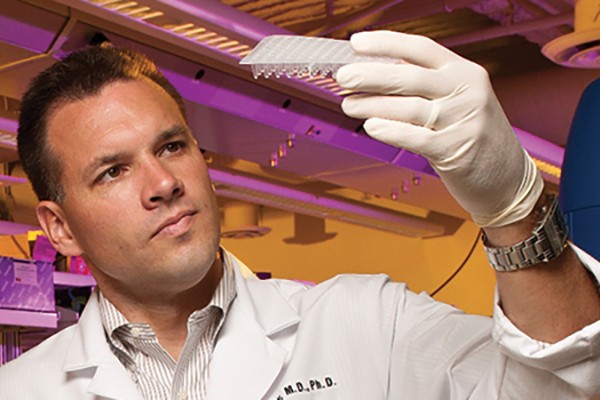Ritters receive 2014 Harris St. Louis Community Service Award
Recipients of this year’s Jane and Whitney Harris St. Louis Community Service Award are Peggy and Jerry Ritter. The award is given annually to a husband-and-wife team for exemplary dedication in advancing the educational, cultural and social service institutions in the metropolitan area.
Panel recommends listing depression as a risk for heart disease
A panel of experts, including researchers from the School of Medicine, is recommending that depression be added to obesity, diabetes, high blood pressure and smoking as a cardiac risk factor.
CANCELED: Nobel laureate neuroscientist Eric Kandel explores art and the mind/brain for the Assembly Series
What happens in your brain when you look at this Klimt painting? A lot more than you might ever guess, according to Nobel laureate neuroscientist Eric Kandel, who will explore the connection between art and the mind/brain in his talk, “The Age of Insight: The Quest to Understand the Unconscious in Art, Mind and Brain from Vienna 1900 to the Present” for the Assembly Series at 5 p.m. Monday, March 3, in Graham Chapel.
Surprising culprit found in cell recycling defect
Researchers at the School of Medicine have identified an unusual cause of the lysosomal storage disorder called mucolipidosis III, at least in a subset of patients. Unlike most genetic diseases that involve dysfunctional or missing proteins, the culprit is a normal protein that ends up in the wrong place.
Patti wins Sloan Research Fellowship
The Alfred P. Sloan Foundation announced Feb. 17 that
Washington University in St. Louis’ Gary Patti has been awarded a 2014 Sloan Research Fellowship.
He is among 126 outstanding U.S. and Canadian researchers selected as
fellowship recipients this year. Awarded annually since 1955, the
fellowships are given to early-career scientists and scholars whose
achievements and potential identify them as rising stars, the next
generation of scientific leaders.
Infants with leukemia inherit susceptibility
Babies who develop leukemia during the first year of life appear to have inherited an unfortunate combination of genetic variations that may make the infants highly susceptible to the disease, according to a new study led by the School of Medicine’s Todd Druley, MD, PhD.
WUSTL faculty receive Fulbright awards
Some WUSTL faculty members have received awards from the Fulbright Program for academic pursuits in areas ranging from architecture to education to medicine.
Inspiring successful entrepreneurs and social innovators with the Suren G. Dutia and Jas K. Grewal Global Impact Award in the Skandalaris Center
A recent gift of $1,025,000 will establish the Suren G. Dutia and Jas K. Grewal Global Impact Award in the Skandalaris Center for Entrepreneurial Studies at Washington University. The endowed fund will receive $1 million, with the remaining $25,000 to support awards made during the current academic year. Applications are being accepted until March 24 for awards to support business ventures aimed at catalyzing social change.
10th Annual Art Show
The School of Medicine’s 10th Annual Art Show, which features works by students, faculty and staff, is in the Farrell Learning and Teaching Center atrium through Friday, Feb. 21.
Smoking cessation may improve mental health
Although many health professionals who treat people with psychiatric problems overlook their patients’ smoking habits, new research at the School of Medicine shows that people who struggle with mood problems or addiction can safely quit smoking and that kicking the habit is associated with improved mental health.
View More Stories

